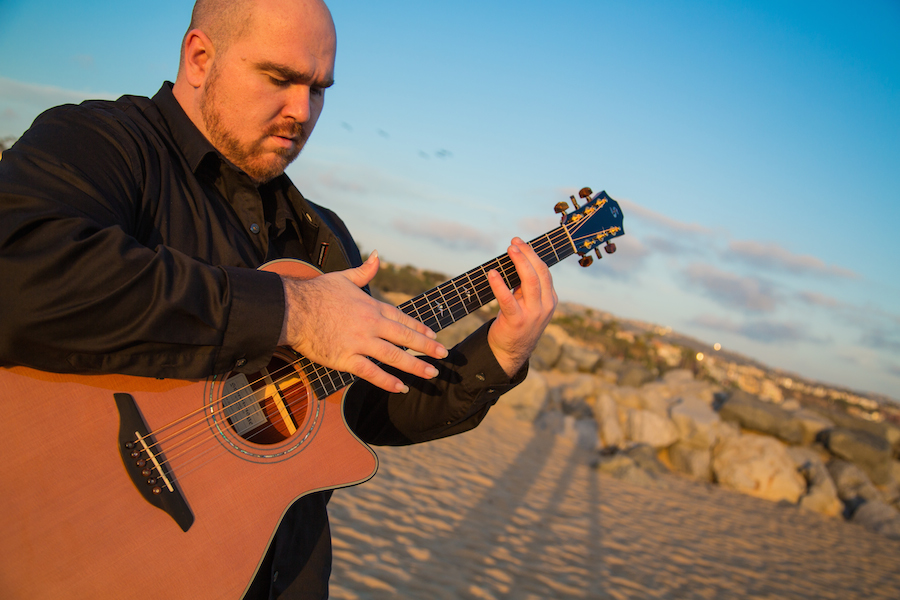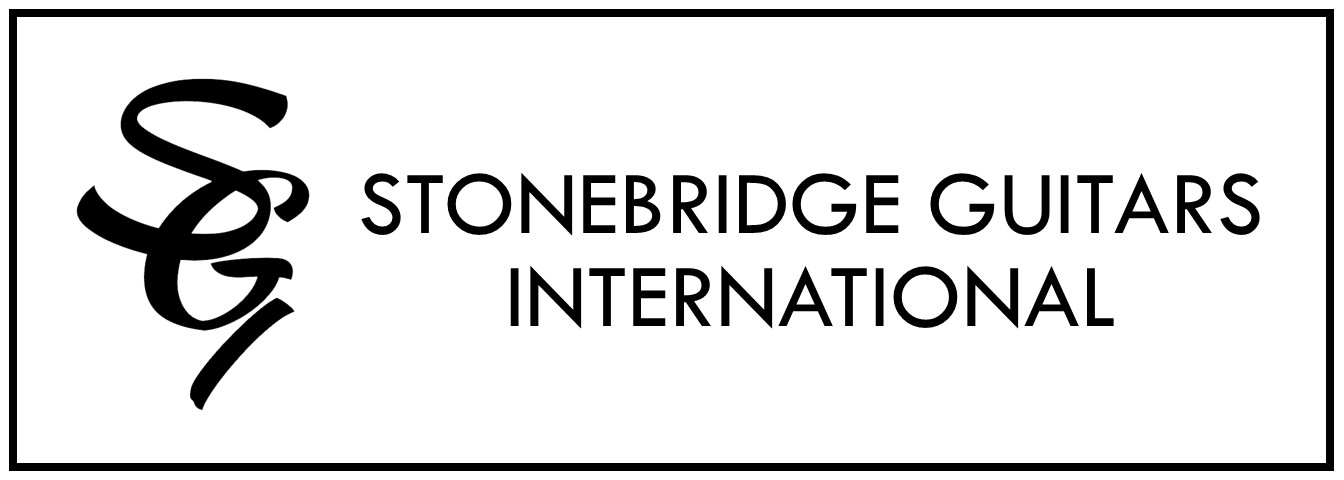In 2012, Donovan Raitt released his first CD of original fingerstyle guitar music entitled Strategic Tension thanks to the help of several financial backers and kickstarter.com. In 2013, Donovan followed with Guitar Hymns Vol. 1, an EP of hymn arrangements for solo guitar. He know has a new album called Pursuing the Horizon which was produced near Montreal with fingerstlye great Antoine Dufour. Donovan continues to perform, teach, compose and lead worship in Orange County, CA. He also holds a masters degree is Guitar Performance from the Cole Conservatory of Music at California State University. 
Luke: The title track Pursuing the Horizon is a great composition which captures the dynamic elements in your playing and writing. Strong bass lines accompany perpetually rolling melodies, deft harmonics leap out with ease, and your percussive style holds it all together in a delightful balance. Tell us about your writing process. How does a song start, take shape and how do you know it’s complete?
Donovan: Thanks for the kind words about the album and the track. As far as my writing process goes it usually starts with a melodic idea or a little snippet of a tune. The ideas come to me when I’m walking around humming a tune or just messing around on the guitar itself. As far as the title track goes I wanted to use odd time signatures and write an idea in 5/4. That piece has two melodies happening simultaneously, one with standard notes and the other with harmonics answering it. It’s a conversation between the two parts.
I make videos of my ideas so I remember the tuning and how I played it. Some of the tunes on the record were written in one sitting and others were pieced together over several months. I like coming back to things after time has passed because it allows me to listen from the audience perspective and give it direction from there.
Luke: Why did you choose Antoine Dufour to record the album, and what was it like? Talk a bit about the recording process with Antoine.
Donovan: Having Antoine Dufour produce the record was a no-brainer for me. He’s one of my main guitar influences. I first heard him play in San Diego with Andy McKee and Stephen Bennett. I’d never seen anybody play or write like him and it was incredibly inspiring. I met him at the Canadian Guitar Festival in 2013 and expressed interest in having him record my second record and thankfully he was up for it. He recorded my friend Daniel Voth’s record as well. I love the sonic quality of Antoine’s production. I even asked the producer of my first record to model the production of Antoine’s album Existence.
The recording process was incredibly smooth. I flew up to his studio outside of Montreal in February, which is pretty darn cold for a California kid! We tracked the album in three days. Then we took two days to mix and master it. Honestly, I was kind of nervous playing my original music in front of one of my guitar heroes, but Antoine was very helpful and constructive. He offered a lot of great advice in shaping some of the songs. It was a lot of fun up there!
Luke: I heard you didn’t use the same tuning twice. Why so many tunings, and how do you find these tunings?
Donovan: Yeah, there’s a lot of tunings on this record. I didn’t really set out to do it that way, but that’s how it worked out. Most of the tunings were used to express the ideas that I heard. I would start writing in one tuning and realize it didn’t work very well. Then change the tuning to allow for open strings so I could play what I was hearing. I’ve used some of the common tunings like open D and open A before. Other tunings I found by accident. The really fun part of writing music this way is rediscovering the guitar each time you write a song.
Luke: Thanks for representing Stonebridge guitars on your album album. We’re proud of how well you showcased their dynamics. Tell us about the guitars you used on the album. Why Stonebridge?
Donovan: Stonebridge Guitars have been fantastic. They’re all I use on this record. My main guitar is a Stonebridge G23CC-C which means it has cocobolo back and sides and a cedar top. I first played a Stonebridge about a year ago and thought they were absolutely amazing. I’ve played some very expensive guitars and I haven’t found any that are suited for fingerstyle like Stonebridge. The 23 is incredibly comfortable for me to play and offers a wide range of musical sounds. I also used a Stonebridge baritone guitar on the track A Moment in Time. The guitar has an amazing low end to it and I really think that comes out on the recording. My Stonebridge has become my main touring and recording guitar.
Luke: Another thing I’d like you to talk about, is how you get such great percussive sounds from the guitar. What different percussion hits have you used on the album? It’s not easy to make percussive guitar sound good, but you do it expertly. How do you get that tone?
Donovan: As far as the percussion side of things I’m using a lot of different techniques such as hitting the strings with my thumb, as well as hitting the body and side of the guitar. I incorporate a lot of different percussive styles into the music and most of them depend on what type of sound I’m going for. I learned a lot of this from Antoine and other fingerstyle artists who’ve studied how to use the guitar more like a drum. Hitting the side of the guitar gives me a snare sound and the top of the guitar gives more of a kick drum sound. Then I incorporate them like a drummer would in a band setting.
